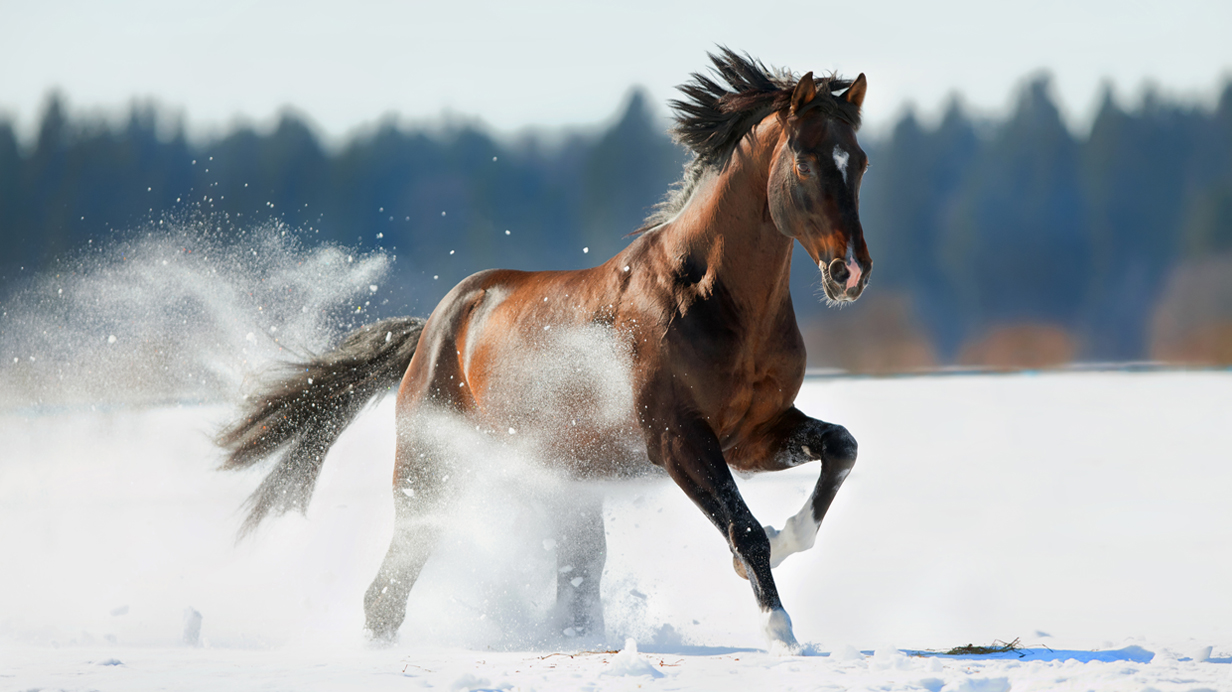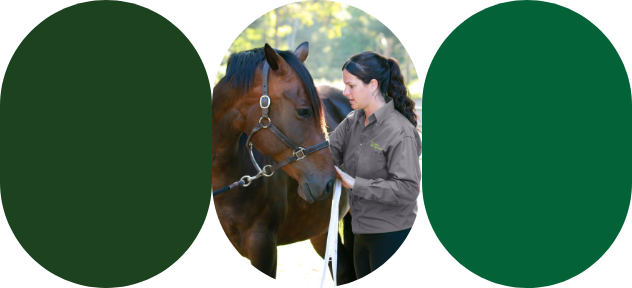How to care for horses in winter
Most horses are happy to live outside in winter. To ensure their well-being in inclement weather and a cold climate, it’s important to monitor a few basic elements and adapt stable management accordingly.
Reorganizing outdoor facilities
Horses that live outside in winter must have shelter for protection from wind, rain and snow.
The feeder and water point should also be strategically located with respect to the shelter. In general, the three structures should be placed in a triangle to ensure that horses stay active.
The ground in the paddock should be solid and free of clutter, and the paddock should be large enough and include a shelter that all the horses have access to at all times. It’s important to plan for enough space to reduce the risk of fighting and dominant behaviour. Good bedding on the ground will also keep horses clean and dry.
Adjusting feed according to energy expenditure
Horses have the capacity to adapt: they can support a drop in temperature. However, past a given threshold, they require additional calories. It’s also important to consider coat quality, which greatly affects a horse’s resistance to cold. In Canada, for healthy adult horses, the resistance threshold is -15 °C. In comparison, growing horses have a lower critical temperature (LCT) of 0 °C.
Estimated LCT based on coat
Estimated digestible energy increase based on variations in LCT
a. Assuming a forage energy density of 2.0 Mcal/kg
b. The total quantity of hay may exceed the daily consumption capacity
For example, for a typical horse with an LCT of -15 °C and a heavy coat, exposed to an outside temperature of -25 °C, the difference is 10 °C. The daily ration will have to be increased by 5,000 calories (approximately 2.5 kg of hay).
Even if there is no change in activity between summer and winter, maintenance needs increase with the drop in temperature. The horse therefore needs more calories to maintain the same body condition. A horse that lives outside and is physically active will therefore need even more calories.
Providing more high-calorie feed
Body fat forms an insulating layer and an energy reserve that the horse will use if its ration does not provide enough calories. Since it serves as insulation, efforts should be made to avoid drawing on this reserve unless the horse’s body condition is really excessive. When the body condition is optimal, the increased need should be offset with nutrient intake.
In theory, calorie level can be adjusted in two ways: by increasing the supply of hay or feed, or by supplying more high-calorie feed (for example, feed containing a higher level of fat).
Generally, in winter, it is preferable to supply unlimited hay because the fermentation of fibre also generates heat. If, however, a horse already receives unlimited hay, adding feed to the daily ration or switching to a more high-calorie feed can help maintain weight despite cold temperatures.
The importance of monitoring
Palpating horses at least once a week and keeping a watchful eye on their environment and behaviour is a good way of monitoring their health. This rigorous monitoring is essential in winter and allows for quick action at the slightest sign of weight loss or discomfort.


